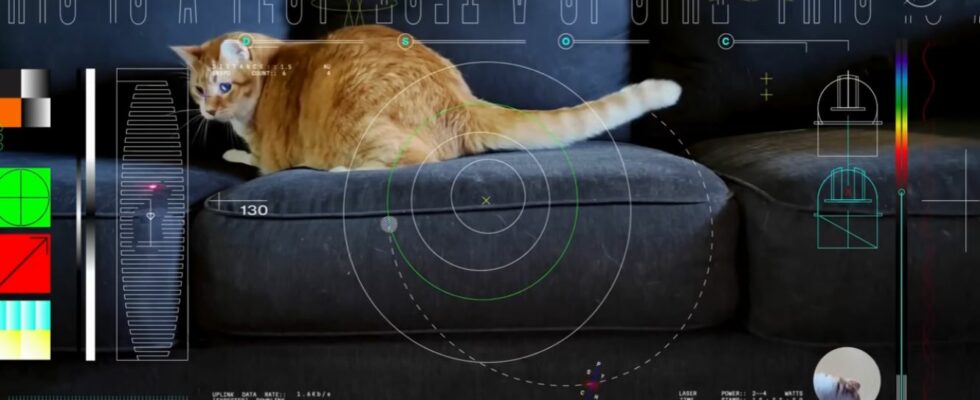His name is Taters, he’s the cat of one of the researchers at the Jet Propulsion Laboratory (JPL) and his 15-second clip was sent from the Psyche probe, more than 30 million kilometers from Earth. A successful experience of transmission by laser signalswhich NASA would like to use on its future missions.
On October 13, thanks to a Falcon Heavy rocket from SpaceX, the Psyche mission could start. The NASA probe then began a long journey, since it will take until 2029 to reach the large metallic asteroid (Psyche, it has the same name as the small vehicle). And usually, after a few weeks of testing and verifying that all the instruments and elements of the probe are working, the ground teams begin a dormant period.
Every year, or every 18 months, they check that all the systems on board are healthy and that the probe is on the right path. For Psyche, hibernation will wait a bit. This December 11, NASA and the JPL laboratory successfully completed the first demonstration of DSOC, or Deep Space Optical Communications, a laser data link experiment.
Taters chase a laser
The DSOC of the Psyché mission is a technological demonstrator, and it is an imposing piece: 25 kg, 75 watts of power and a near-infrared laser diode which emits towards the Earth with great precision to be received in California, by the Palomar Observatory, managed by Caltech, a university which also covers the activities of JPL. The laser was therefore in its first demonstration, but there will be several in the years to come, including when Psyche will be more than 300 million kilometers from our planet, ten times more than during this test in December.
In the meantime, the teams were able to receive the video transmitted by Psyché with impeccable quality, and observe the cat named Taters (he belongs to one of the lab’s researchers) chasing a laser pointer on a sofa. The image contains a few other test elements such as text (to check that there is no line shift) as well as colored markers.
Long distance issues
The communication of probes and satellites by laser is a relatively hot topic in low orbit, with the units of several constellations dedicated to connectivity which are testing this solution to transfer enormous quantities of data between them or to the ground. This is also the case between low orbit satellites and some geostationary units, to avoid critical and short passages above ground stations. But for probes and missions outside Earth orbit, this technology has never been deployed operationally.
It is of particular interest to agencies for future missions around (and on) the Moon, but also further afield, because NASA’s antenna network (the Deep Space Network) has limited capacities to receive large quantities of data such as images from telescopes, films taken by probes and readings which must then be stored locally, sometimes for several years. The era of long-range laser communications may have begun. With a ginger cat.
Source : BBC

9